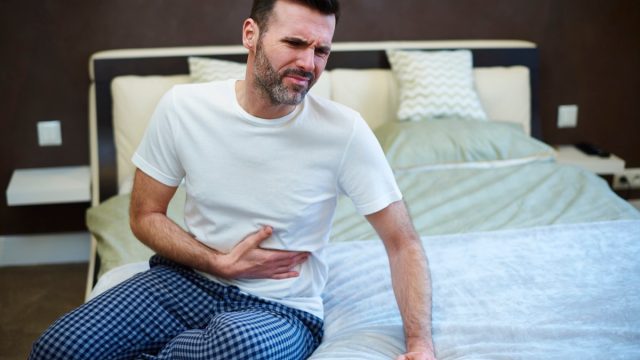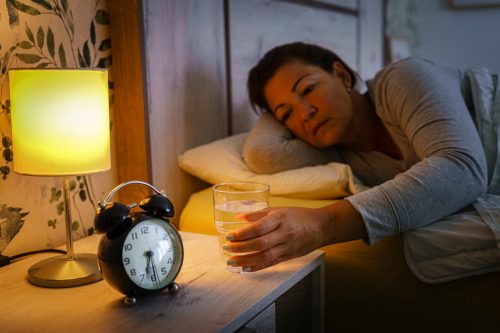Norovirus Cases Spiking Across U.S.—These Are the Symptoms

COVID, the flu, RSV—there’s no shortage of illnesses you can catch right now. But unfortunately, there’s another one you should keep an eye out for: norovirus. The Centers for Disease Control and Prevention (CDC)’s latest data, which was updated on Feb. 22, reveals that there has been an uptick in norovirus cases across the entire U.S.
The highest spike is happening in the Northeast, where the three-week average for positive tests reached 13.4 percent on Feb. 17. Other regions aren’t far behind, with the West seeing a 12.1 percent positive test rate, the Midwest having a 10.2 percent positive test rate, and the South experiencing a 9.5 percent positive test rate.
Also commonly referred to as a stomach bug, norovirus can spread quickly and easily in many different ways. According to the CDC, you can get infected by coming in direct contact with someone who has norovirus, eating food or drinking liquids contaminated with norovirus, and by touching surfaces or objects that have norovirus particles on them.
“It’s a very contagious virus, very contagious,” Dodi Iannaco, the lead nurse practitioner at Virtua Health in South Jersey, told CBS News in a recent interview. “Within the past two to three weeks we’ve seen more cases.”
The CDC says most people develop norovirus symptoms 12 to 48 hours after exposure. Read on to find out what warning signs you should be on the lookout for.
RELATED: Measles Now Spreading in 9 States Amid “Staggering” Outbreak, CDC Warns.
1
Stomach pain

It’s no surprise you will likely experience stomach pain when you have norovirus. After all, this virus leads to acute gastroenteritis, which is “inflammation of the stomach or intestines,” according to the CDC.
RELATED: 5 Hand-Washing Mistakes That Can Expose You to Norovirus or the Flu, Doctors Say.
2
Vomiting and diarrhea

Norovirus is the “most common cause of vomiting and diarrhea,” the CDC states on its website. These two symptoms will usually come on very suddenly and severely—causing you to vomit or have diarrhea many times a day.
RELATED: The 4 Easiest Ways to Catch Norovirus, and How to Avoid Them.
3
Fatigue

All that vomiting and diarrhea is certain to take a toll on your body—so you may also end up feeling a general sense of tiredness.
“If someone is really fatigued, really lethargic, really getting tired, unable to keep fluids down, that’s the time it’s a good idea for them to come to the emergency room for evaluation,” Iannaco said.
RELATED: Deadly Fungal Infection Spreading to New Parts of U.S., CDC Warns.
4
Dehydration

This change in your level of energy could also be a sign of dehydration, which is the “biggest risk” with norovirus, Iannaco warned. Usually the result of nonstop vomiting and diarrhea, dehydration can also cause you to experience related symptoms, such as an decrease in urination, dry mouth and throat, and dizziness when you stand up, according to the CDC.
5
Fever

A fever could come on with norovirus as well, but it tends to be a low-grade fever of typically less than 101.5 degrees Fahrenheit in adults, Robin Colgrove, MD, an infectious disease doctor at Mount Auburn Hospital in Cambridge, Massachusetts, told U.S. News & World Report.
It may be different for children who get norovirus, however. “They can run quite high fevers even with otherwise mild infections,” Colgrove shared.
Best Life offers the most up-to-date information from top experts, new research, and health agencies, but our content is not meant to be a substitute for professional guidance. When it comes to the medication you’re taking or any other health questions you have, always consult your healthcare provider directly.
- Source: CDC: Norovirus Census Region
- Source: CDC: How Norovirus Spreads
- Source: CDC: Symptoms of Norovirus